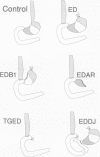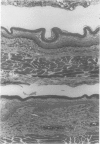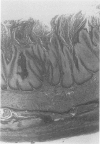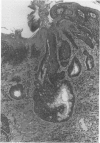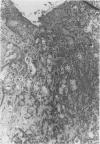Abstract
OBJECTIVE: The authors investigate the effects of gastric juice on tumorigenesis in a rat model of esophageal adenocarcinoma. SUMMARY BACKGROUND DATA: In rats treated with the carcinogen methyl-n-amyl nitrosamine, squamous cancer of the esophagus develops in a time- and dose-dependent manner. When methyl-n-amyl nitrosamine treatment is preceded by an operation to induce reflux of duodenal and gastric juice into the esophagus, there is an increased yield of esophageal tumors, many of which are adenocarcinomas. When only gastric juice refluxes into the esophagus, the tumor yield is less and adenocarcinomas are not found. METHODS: Two hundred seventy 8-week old Sprague-Dawley rats were studied. Twenty unoperated rats served as controls. The remaining rats underwent the following operations: esophagoduodenostomy with gastric and vagal preservation to induce duodenogastroesophageal reflux (n = 48); esophagoduodenostomy with antrectomy and Billroth 1 reconstruction to produce reflux of duodenogastric juice with the exclusion of the antrum (n = 53); esophagoduodenostomy with proximal gastrectomy to induce hypergastrinemia and reflux of duodenogastric juice with exclusion of the body and forestomach (n = 51); esophagoduodenostomy plus total gastrectomy to produce reflux of duodenal juice alone (n = 50); and esophagoduodenostomy with vagal and gastric preservation but with division of the duodenum just beyond the pylorus and reimplantation into the jejunum, 13 cm distal to the esophagoduodenostomy. This produced reflux of duodenal juice with gastric juice diverted downstream, (n = 48). At 10 weeks of age, all rats were given 4 weekly doses of carcinogen (methyl-n-amyl nitrosamine, 25 mg/kg intraperitoneally), and survivors were killed at 36 weeks of age. RESULTS: The prevalence rate of esophageal adenocarcinoma was 30% in rats with duodenogastroesophageal reflux and 87% in rats with reflux of duodenal juice alone. Fifty-six percent of rats with reflux of duodenogastric juice with exclusion of the antrum and 72% of rats with reflux of duodenogastric juice with the exclusion of the body and forestomach developed adenocarcinoma, showing a progression increase in the prevalence of adenocarcinoma as less gastric juice was permitted to reflux with duodenal juice into the esophagus. CONCLUSION: In this rat model, the presence of gastric juice in refluxed duodenal juice against the development of esophageal adenocarcinoma. The protective effect appears to be due to acid secretion from the stomach. Continuous profound acid suppression therapy may be detrimental by encouraging esophageal metaplasia and tumorigenesis in patients with duodenogastroesophageal reflux.
Full text
PDF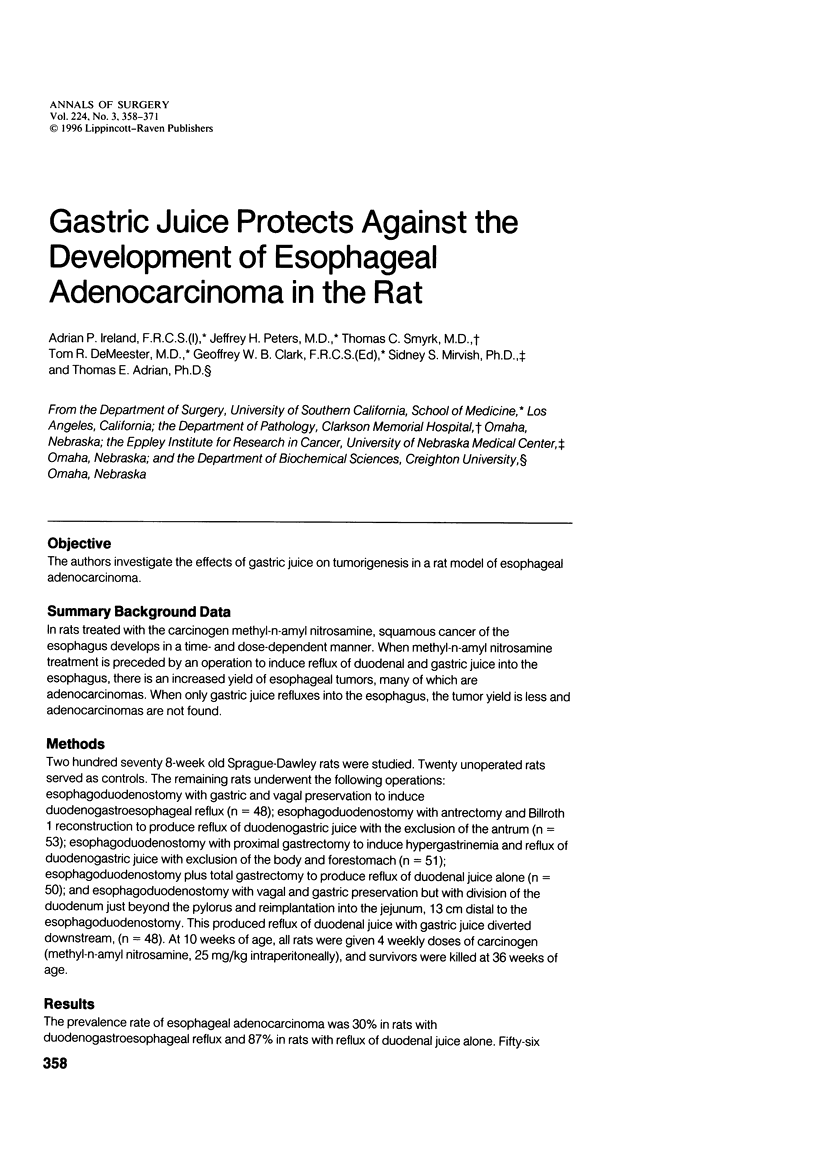
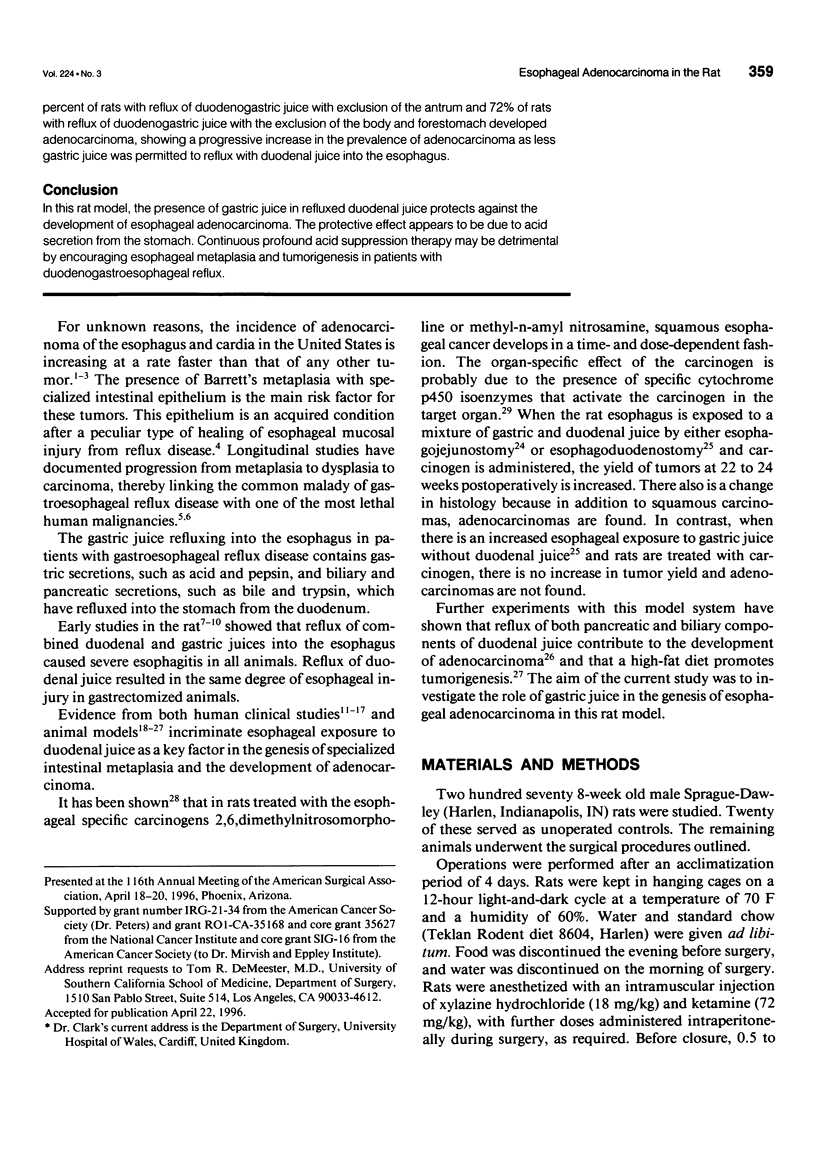
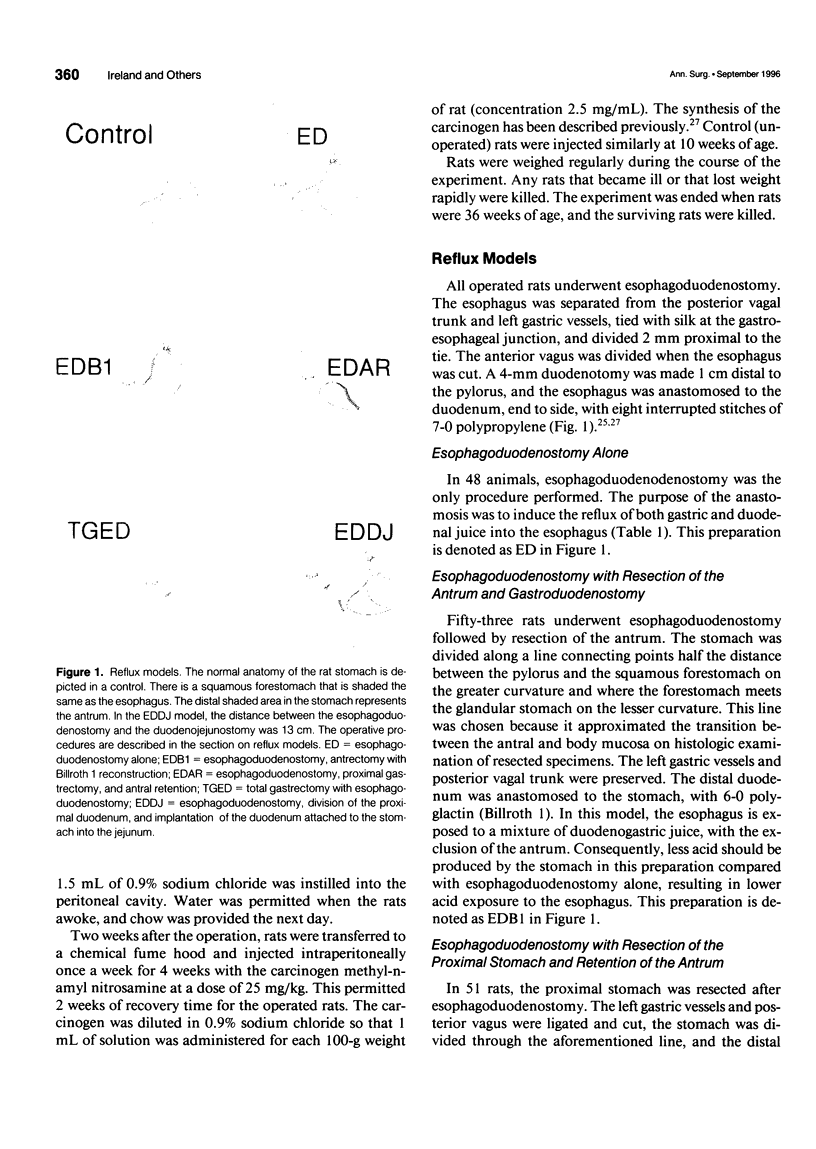
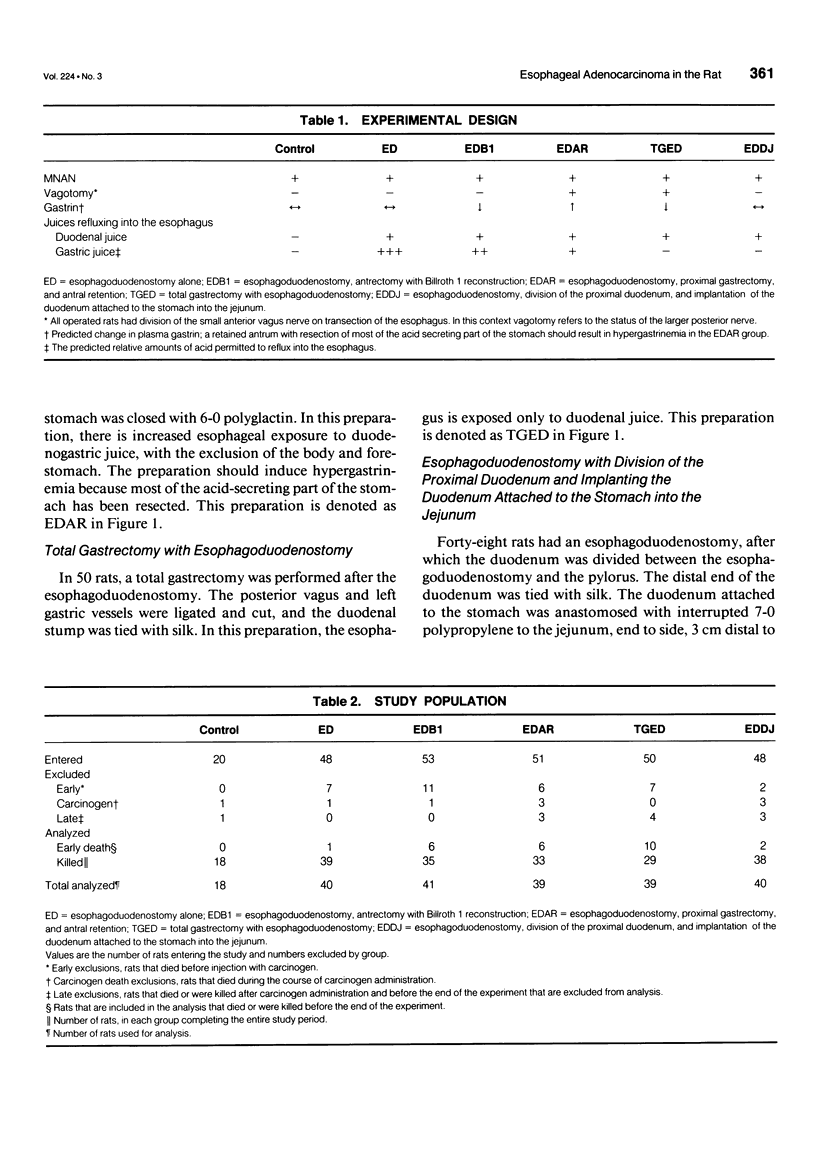
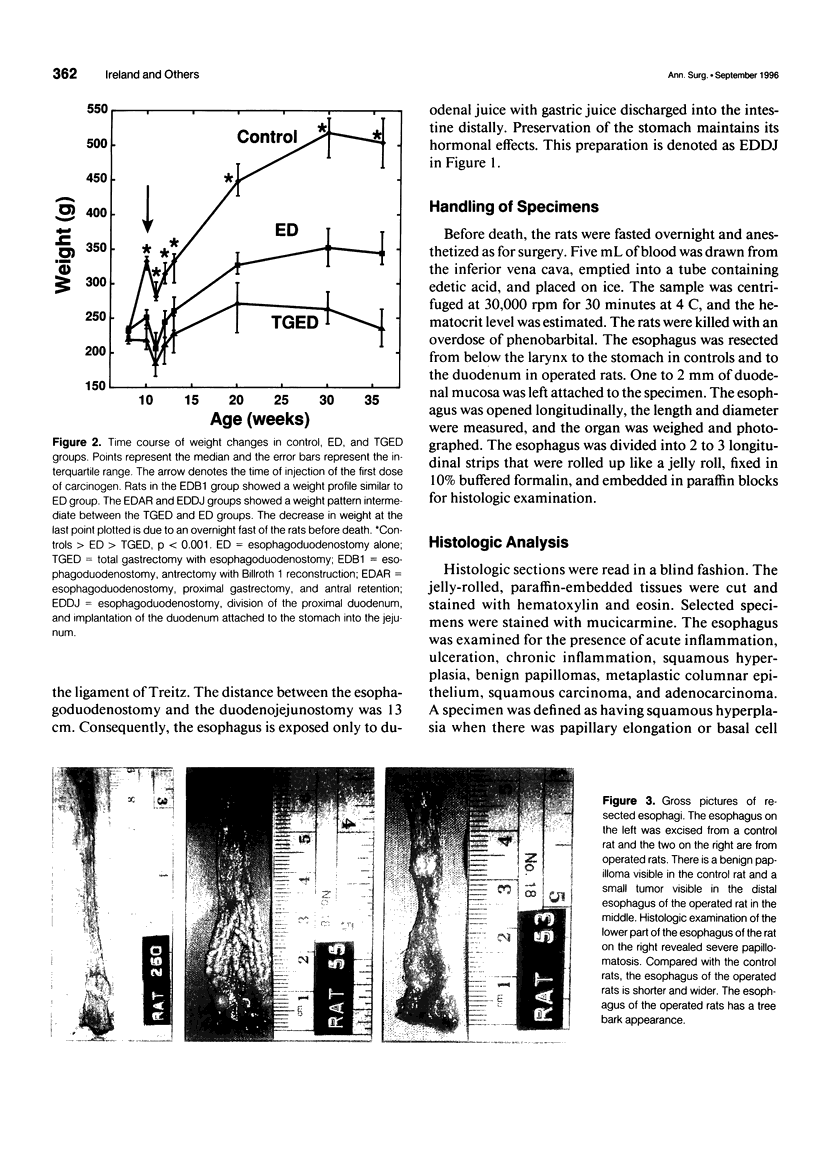
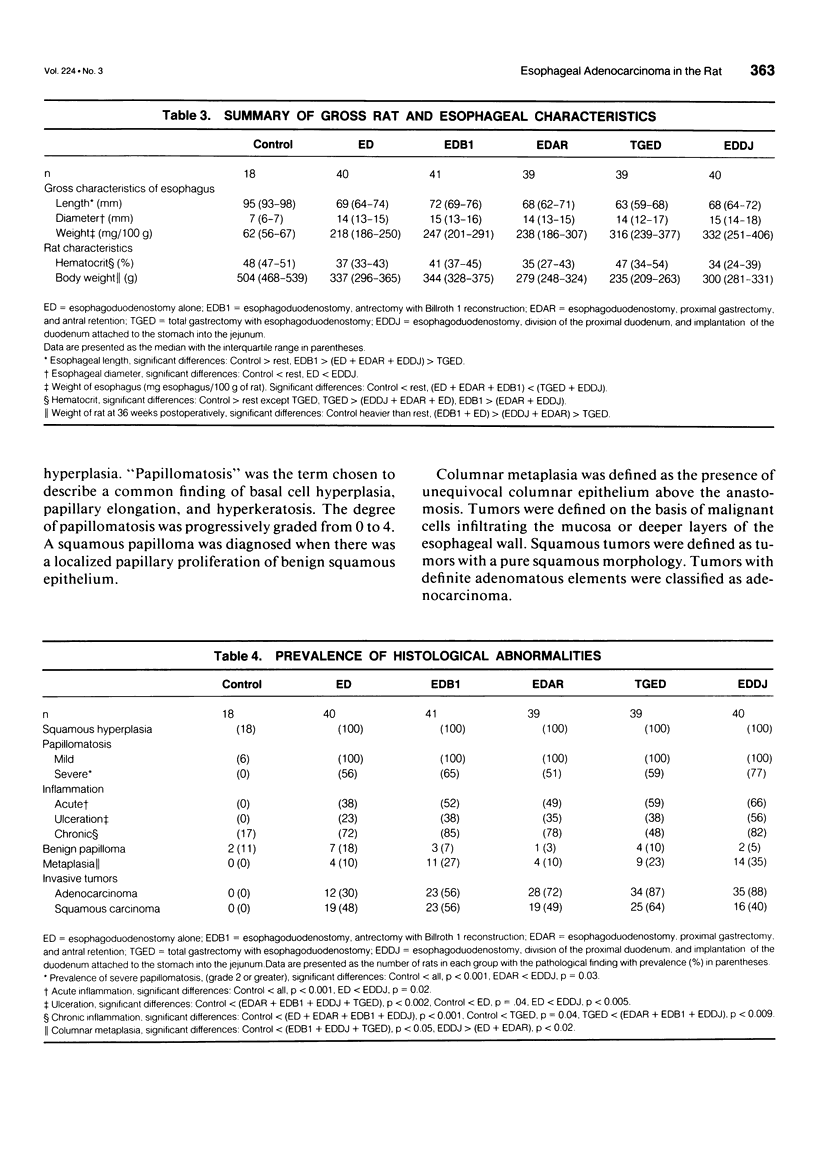
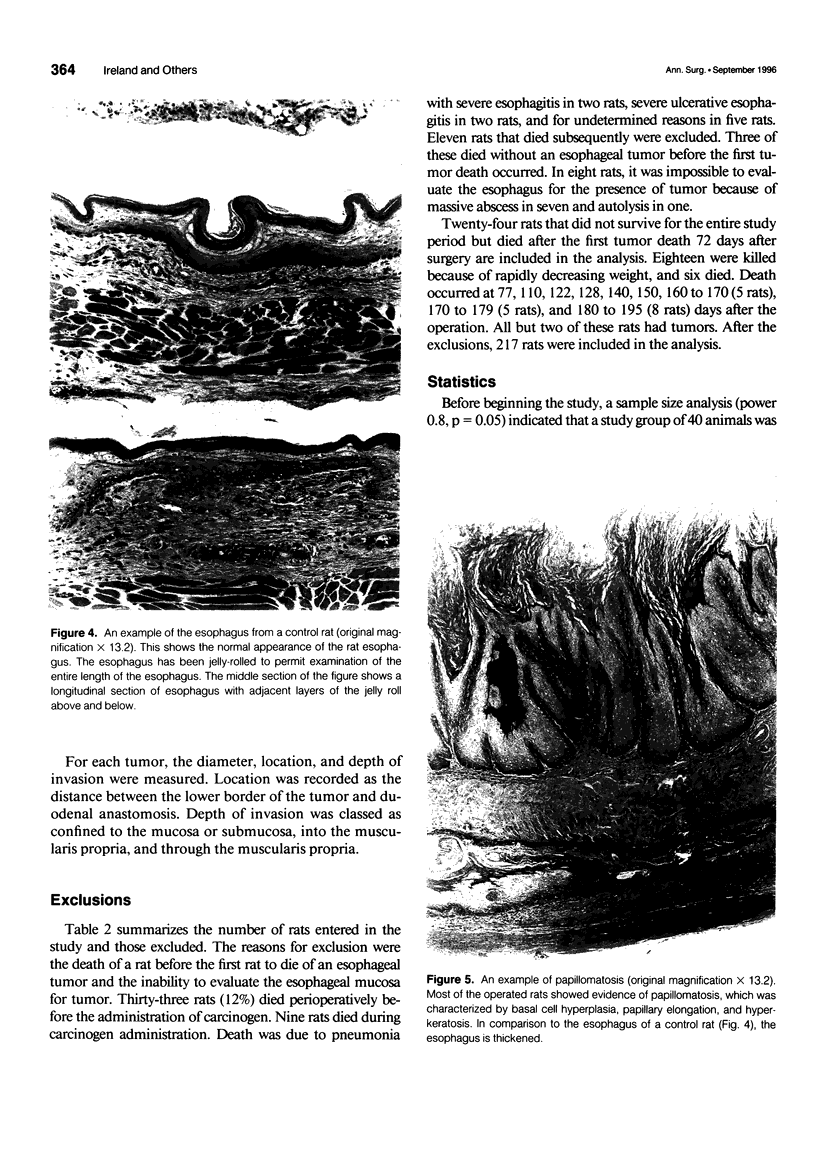
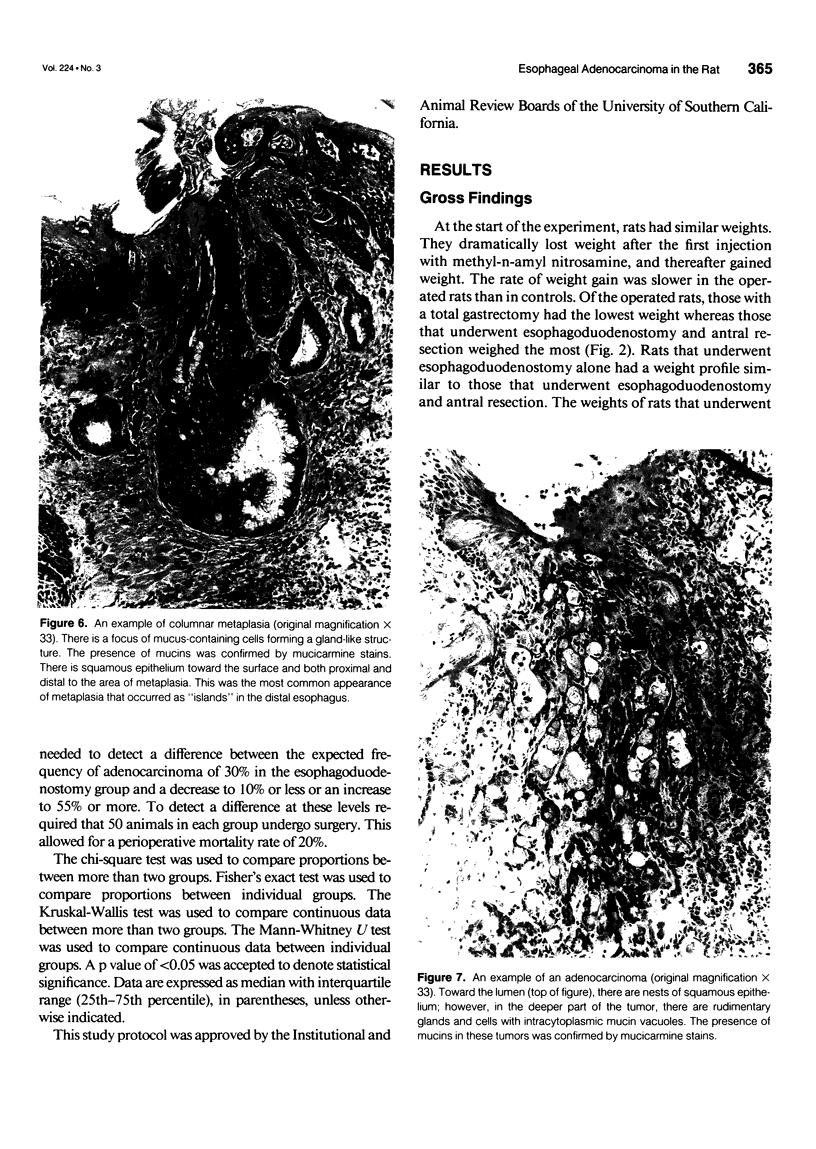
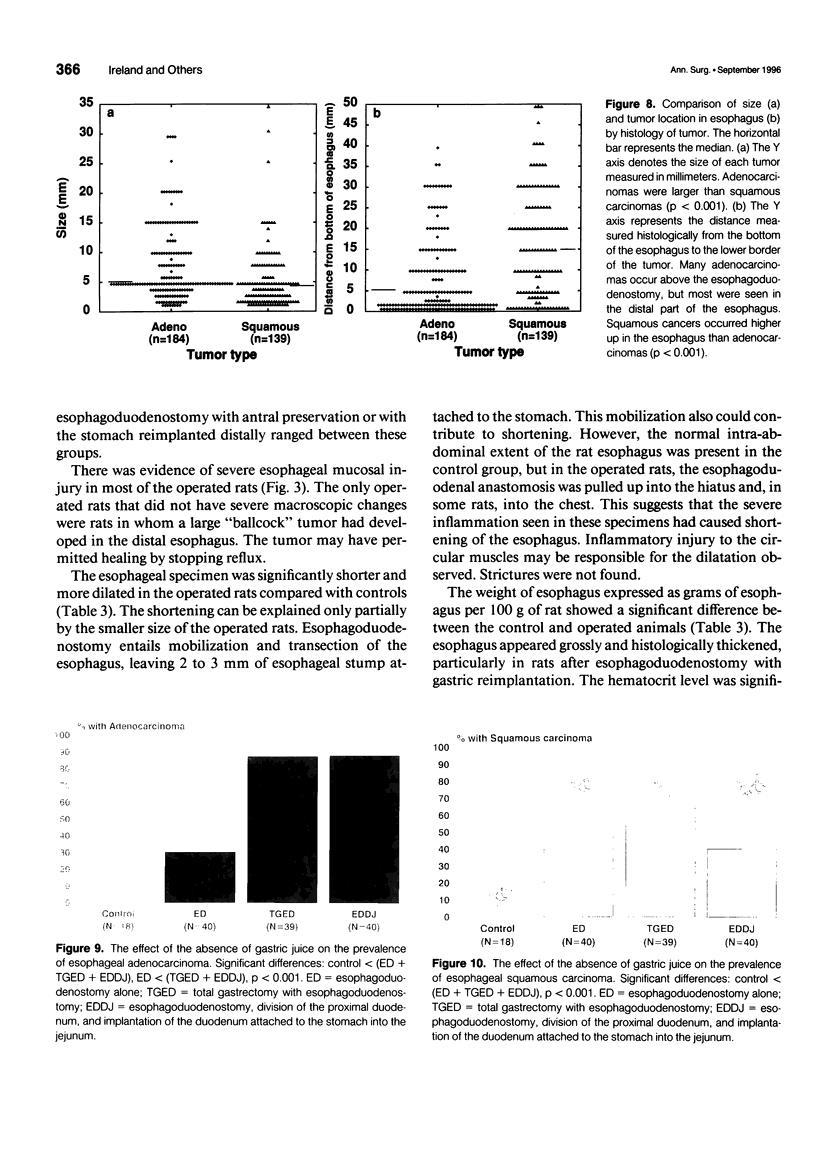
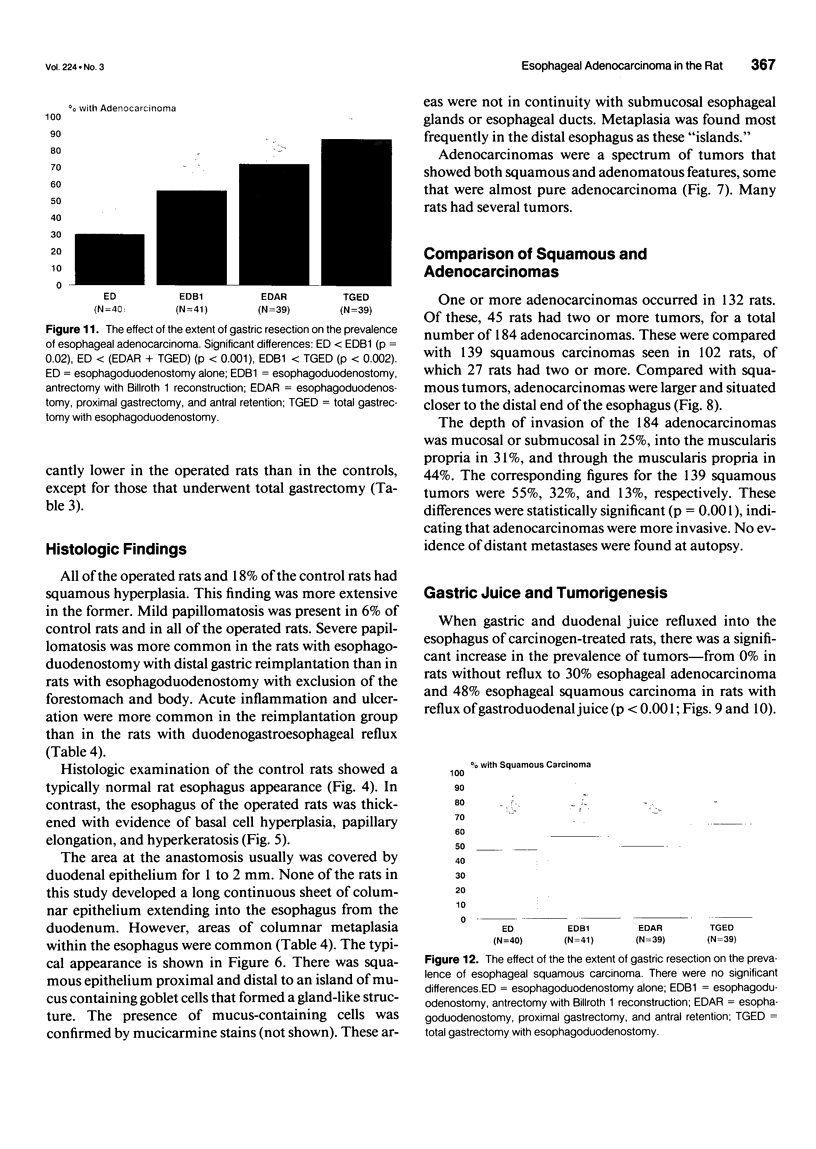
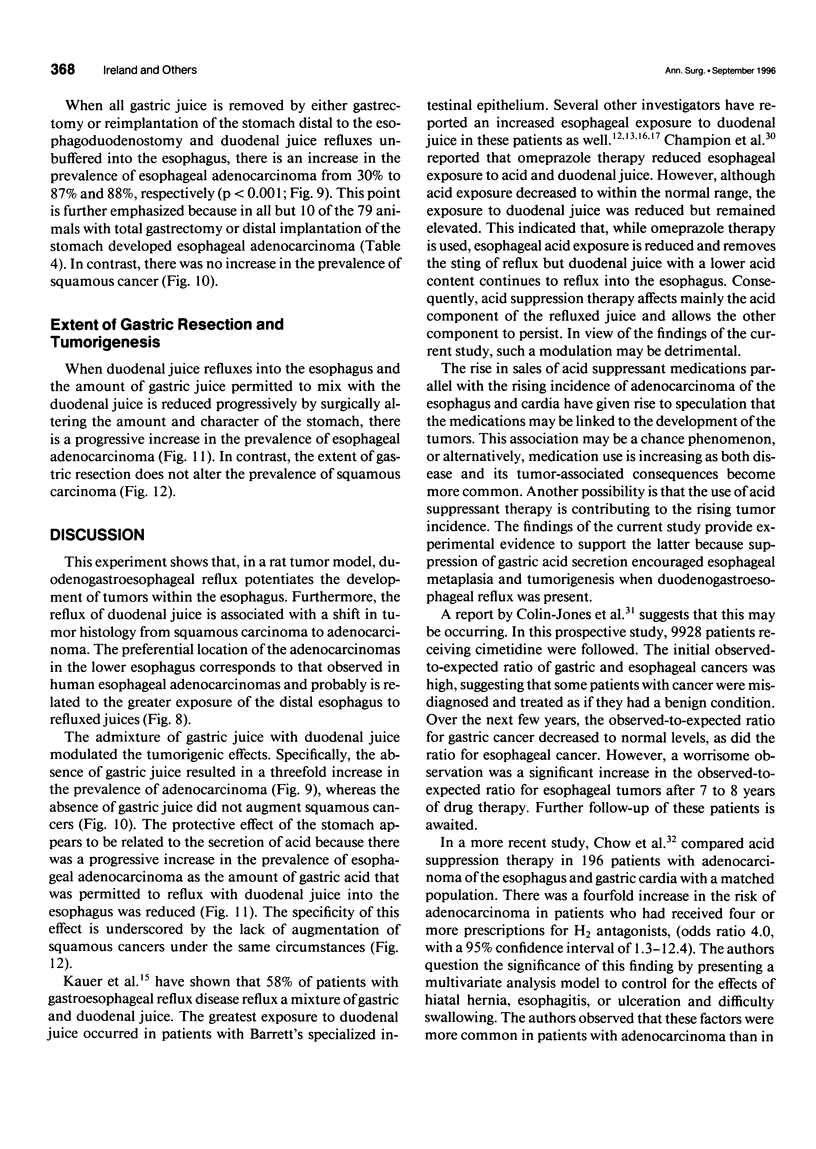
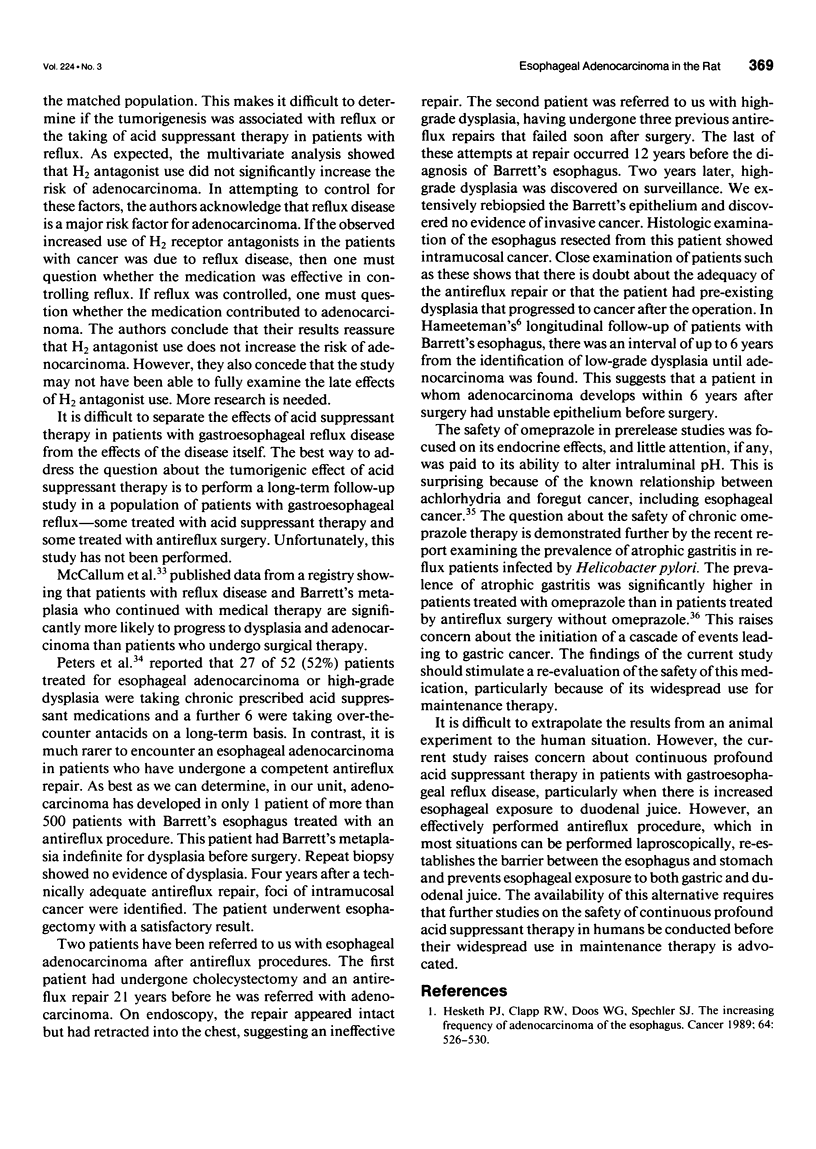
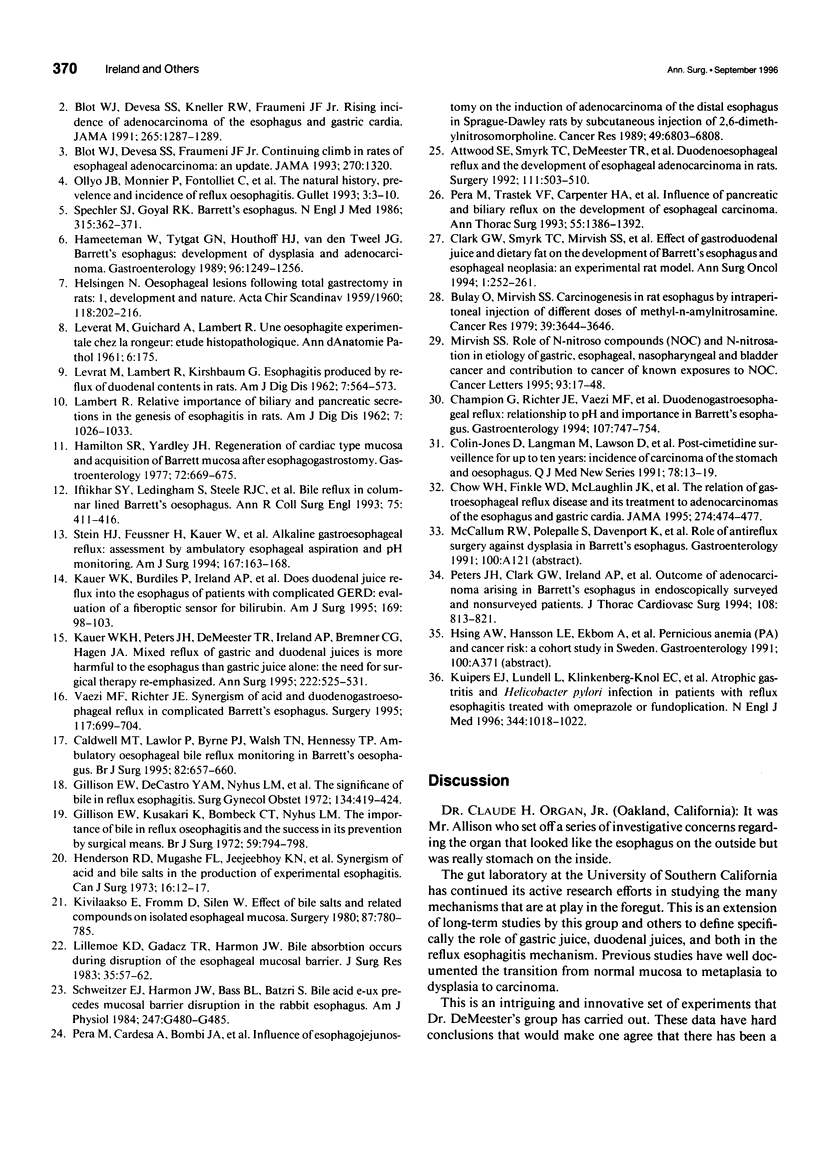
Images in this article
Selected References
These references are in PubMed. This may not be the complete list of references from this article.
- Attwood S. E., Smyrk T. C., DeMeester T. R., Mirvish S. S., Stein H. J., Hinder R. A. Duodenoesophageal reflux and the development of esophageal adenocarcinoma in rats. Surgery. 1992 May;111(5):503–510. [PubMed] [Google Scholar]
- Blot W. J., Devesa S. S., Fraumeni J. F., Jr Continuing climb in rates of esophageal adenocarcinoma: an update. JAMA. 1993 Sep 15;270(11):1320–1320. [PubMed] [Google Scholar]
- Blot W. J., Devesa S. S., Kneller R. W., Fraumeni J. F., Jr Rising incidence of adenocarcinoma of the esophagus and gastric cardia. JAMA. 1991 Mar 13;265(10):1287–1289. [PubMed] [Google Scholar]
- Bulay O., Mirvish S. S. Carcinogenesis in rat esophagus by intraperitoneal injection of different doses of methyl-n-amylnitrosamine. Cancer Res. 1979 Sep;39(9):3644–3646. [PubMed] [Google Scholar]
- Caldwell M. T., Lawlor P., Byrne P. J., Walsh T. N., Hennessy T. P. Ambulatory oesophageal bile reflux monitoring in Barrett's oesophagus. Br J Surg. 1995 May;82(5):657–660. doi: 10.1002/bjs.1800820528. [DOI] [PubMed] [Google Scholar]
- Champion G., Richter J. E., Vaezi M. F., Singh S., Alexander R. Duodenogastroesophageal reflux: relationship to pH and importance in Barrett's esophagus. Gastroenterology. 1994 Sep;107(3):747–754. doi: 10.1016/0016-5085(94)90123-6. [DOI] [PubMed] [Google Scholar]
- Chow W. H., Finkle W. D., McLaughlin J. K., Frankl H., Ziel H. K., Fraumeni J. F., Jr The relation of gastroesophageal reflux disease and its treatment to adenocarcinomas of the esophagus and gastric cardia. JAMA. 1995 Aug 9;274(6):474–477. [PubMed] [Google Scholar]
- Clark G. W., Smyrk T. C., Mirvish S. S., Anselmino M., Yamashita Y., Hinder R. A., DeMeester T. R., Birt D. F. Effect of gastroduodenal juice and dietary fat on the development of Barrett's esophagus and esophageal neoplasia: an experimental rat model. Ann Surg Oncol. 1994 May;1(3):252–261. doi: 10.1007/BF02303531. [DOI] [PubMed] [Google Scholar]
- Colin-Jones D. G., Langman M. J., Lawson D. H., Logan R. F., Paterson K. R., Vessey M. P. Post-cimetidine surveillance for up to ten years: incidence of carcinoma of the stomach and oesophagus. Q J Med. 1991 Jan;78(285):13–19. [PubMed] [Google Scholar]
- Gillison E. W., De Castro V. A., Nyhus L. M., Kusakari K., Bombeck C. T. The significance of bile in reflux esophagitis. Surg Gynecol Obstet. 1972 Mar;134(3):419–424. [PubMed] [Google Scholar]
- Gillison E. W., Kusakari K., Bombeck C. T., Nyhus L. M. The importance of bile in reflux oesophagitis and the success in its prevention by surgical means. Br J Surg. 1972 Oct;59(10):794–798. doi: 10.1002/bjs.1800591013. [DOI] [PubMed] [Google Scholar]
- HELSINGEN N., Jr Oesophageal lesions following total gastrectomy in rats. I. Development and nature. Acta Chir Scand. 1960 Jan 30;118:202–216. [PubMed] [Google Scholar]
- Hameeteman W., Tytgat G. N., Houthoff H. J., van den Tweel J. G. Barrett's esophagus: development of dysplasia and adenocarcinoma. Gastroenterology. 1989 May;96(5 Pt 1):1249–1256. doi: 10.1016/s0016-5085(89)80011-3. [DOI] [PubMed] [Google Scholar]
- Hamilton S. R., Yardley J. H. Regnerative of cardiac type mucosa and acquisition of Barrett mucosa after esophagogastrostomy. Gastroenterology. 1977 Apr;72(4 Pt 1):669–675. [PubMed] [Google Scholar]
- Henderson R. D., Mugashe F. L., Jeejeebhoy K. N., Szczpanski M. M., Cullen J., Marryatt G., Boszko A. Synergism of acid and bile salts in the production of experimental esophagitis. Can J Surg. 1973 Jan;16(1):12–17. [PubMed] [Google Scholar]
- Hesketh P. J., Clapp R. W., Doos W. G., Spechler S. J. The increasing frequency of adenocarcinoma of the esophagus. Cancer. 1989 Jul 15;64(2):526–530. doi: 10.1002/1097-0142(19890715)64:2<526::aid-cncr2820640228>3.0.co;2-b. [DOI] [PubMed] [Google Scholar]
- Iftikhar S. Y., Ledingham S., Steele R. J., Evans D. F., Lendrum K., Atkinson M., Hardcastle J. D. Bile reflux in columnar-lined Barrett's oesophagus. Ann R Coll Surg Engl. 1993 Nov;75(6):411–416. [PMC free article] [PubMed] [Google Scholar]
- Kauer W. K., Burdiles P., Ireland A. P., Clark G. W., Peters J. H., Bremner C. G., DeMeester T. R. Does duodenal juice reflux into the esophagus of patients with complicated GERD? Evaluation of a fiberoptic sensor for bilirubin. Am J Surg. 1995 Jan;169(1):98–104. doi: 10.1016/s0002-9610(99)80116-0. [DOI] [PubMed] [Google Scholar]
- Kauer W. K., Peters J. H., DeMeester T. R., Ireland A. P., Bremner C. G., Hagen J. A. Mixed reflux of gastric and duodenal juices is more harmful to the esophagus than gastric juice alone. The need for surgical therapy re-emphasized. Ann Surg. 1995 Oct;222(4):525–533. doi: 10.1097/00000658-199522240-00010. [DOI] [PMC free article] [PubMed] [Google Scholar]
- LAMBERT R. Relative importance of biliary and pancreatic secretions in the genesis of esophagitis in rats. Am J Dig Dis. 1962 Nov;7:1026–1033. doi: 10.1007/BF02231905. [DOI] [PubMed] [Google Scholar]
- LEVRAT M., LAMBERT R., KIRSHBAUM G. Esophagitis produced by reflux of duodenal contents in rats. Am J Dig Dis. 1962 Jun;7:564–573. doi: 10.1007/BF02236137. [DOI] [PubMed] [Google Scholar]
- Lillemoe K. D., Gadacz T. R., Harmon J. W. Bile absorption occurs during disruption of the esophageal mucosal barrier. J Surg Res. 1983 Jul;35(1):57–62. doi: 10.1016/0022-4804(83)90126-9. [DOI] [PubMed] [Google Scholar]
- Mirvish S. S. Role of N-nitroso compounds (NOC) and N-nitrosation in etiology of gastric, esophageal, nasopharyngeal and bladder cancer and contribution to cancer of known exposures to NOC. Cancer Lett. 1995 Jun 29;93(1):17–48. doi: 10.1016/0304-3835(95)03786-V. [DOI] [PubMed] [Google Scholar]
- Pera M., Trastek V. F., Carpenter H. A., Fernandez P. L., Cardesa A., Mohr U., Pairolero P. C. Influence of pancreatic and biliary reflux on the development of esophageal carcinoma. Ann Thorac Surg. 1993 Jun;55(6):1386–1393. doi: 10.1016/0003-4975(93)91077-z. [DOI] [PubMed] [Google Scholar]
- Peters J. H., Clark G. W., Ireland A. P., Chandrasoma P., Smyrk T. C., DeMeester T. R. Outcome of adenocarcinoma arising in Barrett's esophagus in endoscopically surveyed and nonsurveyed patients. J Thorac Cardiovasc Surg. 1994 Nov;108(5):813–822. [PubMed] [Google Scholar]
- Schweitzer E. J., Harmon J. W., Bass B. L., Batzri S. Bile acid efflux precedes mucosal barrier disruption in the rabbit esophagus. Am J Physiol. 1984 Nov;247(5 Pt 1):G480–G485. doi: 10.1152/ajpgi.1984.247.5.G480. [DOI] [PubMed] [Google Scholar]
- Spechler S. J., Goyal R. K. Barrett's esophagus. N Engl J Med. 1986 Aug 7;315(6):362–371. doi: 10.1056/NEJM198608073150605. [DOI] [PubMed] [Google Scholar]
- Stein H. J., Feussner H., Kauer W., DeMeester T. R., Siewert J. R. Alkaline gastroesophageal reflux: assessment by ambulatory esophageal aspiration and pH monitoring. Am J Surg. 1994 Jan;167(1):163–168. doi: 10.1016/0002-9610(94)90068-x. [DOI] [PubMed] [Google Scholar]
- Vaezi M. F., Richter J. E. Synergism of acid and duodenogastroesophageal reflux in complicated Barrett's esophagus. Surgery. 1995 Jun;117(6):699–704. doi: 10.1016/s0039-6060(95)80015-8. [DOI] [PubMed] [Google Scholar]



